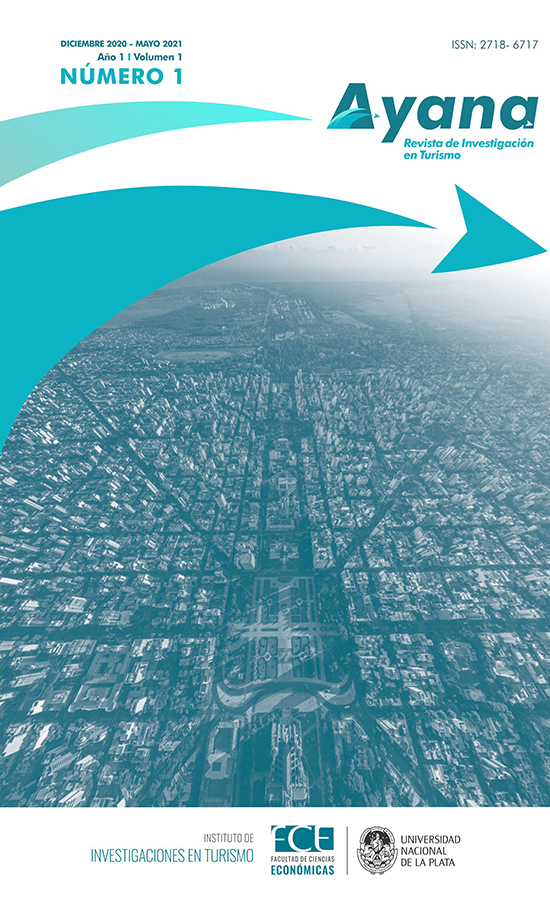The (re) urbanization of Honolulu: Colonialism and urban renewal in Hawaii
DOI:
https://doi.org/10.24215/27186717e006Keywords:
colonialism, urbanization, urban renewal, gentrificationAbstract
In this essay, I explore the implications of (neo)colonialism on Keʻeaumoku street and look towards indigenous and community-based answers. As issues of gentrification, homelessness, and the rising cost of living plague Hawaiʻi, many look for ways to solve these issues as an “Us” (Hawaiʻi Residents) versus “Them” (Continental U.S. and International Corporations) dichotomy, as opposed to looking towards the broader issues of colonialism and the further implications. To do this, I specifically look at the Transit-Oriented Development and make connections between the historical and contemporary urbanization of Honolulu and the ongoing colonization of Hawaiʻi. I also suggest that the social action previously taken by communities in Kakaʻako should be used for the Keʻeaumoku street community.
Downloads
References
ALA MOANA Neighborhood Transit-Oriented Development Plan (2013). ALA MOANA Neighborhood Transit-Oriented Development Plan.
Chinatown Historic District (Honolulu) (U.S. National Park Service). (n.d.). Retrieved from https://www.nps.gov/places/chinatown-historic-district-honolulu.htm.
ASLA [American Society of Landscape Architects] (2011). Chinatown Riverwalk Revitalization and Downtown Connectivity Study. Chinatown Riverwalk Revitalization and Downtown Connectivity Study. Retrieved from: https://www.honolulu.gov/rep/site/ohou/ohou_docs/Chinatown_Riverwalk_Study_Final_Report_Dec2011.pdf.
Department of Planning and Permitting (2019, October 22). ALA MOANA. Retrieved on February 4, 2020 from http://www.honolulu.gov/tod/neighborhood-tod-plans/dpp-tod-alamoana.html.
Feeser, A. y Chan, G. (2006). Waikīkī: A history of forgetting & remembering. University of Hawai'i Press.
Goodyear-Ka’ōpua, N. (2009). Rebuilding the ‘Auwai: Connecting Ecology, Economy and Education in Hawaiian Schools. AlterNative: An International Journal of Indigenous Peoples, 5(2), 46–77. https://doi.org/10.1177/117718010900500204.
Grandinetti, T. (2015) Whose Kakaʻako: Capitalism, Settler Colonialism, and Urban Development in Honolulu. The University of Hawaii at Manoa. UH, Press. Honolulu, HI.
Grandinetti, T. (2019). Urban Aloha ‘Aina: Kaka‘ako and a Decolonized Right to the City.Settler Colonial Studies. 19(2): 227-246.
Sperling's Best Places. (n.d.). Retrieved from https://www.bestplaces.net/economy/city/hawaii/honolulu
Trask, H. (1999). From A Native Daughter: Colonialism and Sovereignty in Hawaiʻi. Rev. ed. Honolulu: University of Hawaiʻi Press.
Tsai, M. (July 2, 2006). Bubonic Plague and the Chinatown Fire. Honolulu Advertiser. Retrieved on 2010-04-11.
Wiegel, R. L. (2008). Waikiki Beach, Oahu, Hawaii: History of its Transformation from a Natural to an Urban Shore. Shore & Beach. 76(2), 3–30.
Yamato, T. (2020, January 15). VICTORIA PLACE. Retrieved from https://tracyyamato.com/condo/victoria-place/.
Downloads
Published
How to Cite
Issue
Section
License
Those authors who have publications with this journal, agree with the following terms:
a. Authors will retain its copyright and will ensure the rights of first publication of its work to the journal, which will be at the same time subject to the Creative Commons Atribución-NoComercial-SinDerivadas 4.0 Internacional (CC BY-NC-ND 4.0) allowing third parties to share the work as long as the author and the first publication on this journal is indicated.
b. Authors may elect other non-exclusive license agreements of the distribution of the published work (for example: locate it on an institutional telematics file or publish it on an monographic volume) as long as the first publication on this journal is indicated,
c. Authors are allowed and suggested to disseminate its work through the internet (for example: in institutional telematics files or in their website) before and during the submission process, which could produce interesting exchanges and increase the references of the published work. (see The effect of open Access)

























